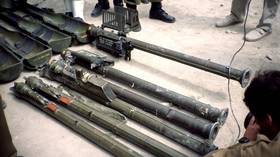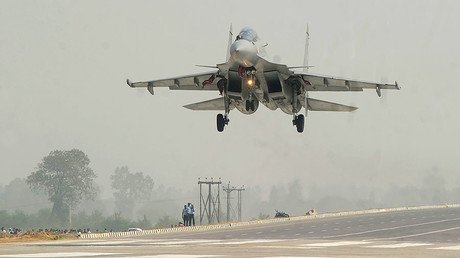GRU vet honored for capturing proof of US missile smuggling to Afghan militants in 1987

A retired soviet commando, who captured evidence of US deliveries of anti-aircraft missiles to the mujahideen during the Soviet campaign in Afghanistan, has belatedly received Russia's highest national order.
Vladimir Kovtun is a decorated retired colonel with quite an eventful career behind him. While in service he was a commando officer of the elite special operation unit of the Military Intelligence Directorate, better known as the GRU. On Friday, he added a new merit to his collection – the golden star of the Hero of Russia, the country's highest military decoration.
Hunt for Stingers
The award was bestowed on the 30th anniversary of the Soviet pullout from Afghanistan and fixes what many believe to be an historic injustice. Kovtun was one of several soldiers, who were supposed to get the merit back in 1987 for capturing FIM-92 Stinger portable anti-aircraft missiles, which the US had started smuggling to the Afghan militants with the help of Pakistani intelligence.
The pet project of Texas congressman Charlie Wilson was launched in earnest a year earlier and resulted in several painful losses of helicopters, which were essential for the counterinsurgency effort of the Soviet command.
But Moscow could not simply accuse Washington of arming the mujahideen with advanced weapons without proof, so a hunt was declared to get it. The promise was whoever was first to seize a Stinger from the militants would become a hero of the USSR.
(Vladimir Kovtun now lives a farmer's life)
Kovtun, a GRU commando with a rank of lieutenant, was part of the group that got lucky. In January 1987, he and several soldiers went on a patrol from their base in Kabul under the command of Captain Evgeny Sergeev. They rode two Mi-8 and two Mi-28 helicopters towards Kandahar aiming for a remote zone far from both cities, which allowed the militants to operate with relative impunity.
Case of evidence
The patrol was part of a regular seek-and-hunt strategy. The approach proved fruitful, when the choppers surprised a group of fighters riding motorbikes. The militants fired at the aircraft from what the team initially thought was a regular rocket-propelled grenade launcher but were actually the coveted Stingers. Luckily for the patrol, their enemy didn't have time to properly prepare the weapons and the two missiles missed.
The nine-strong team of GRU commandos, headed by Sergeev, got on the ground and entered a firefight with the militants while the strike helicopters provided air support. The enemy squad turned out stronger than expected as more fighters came to help the motorcyclists, but the experience and superior firepower was on the side of the Soviets, who killed 16 mujahedeen and captured an injured enemy fighter.
Kovtun's crucial role was in obtaining a briefcase full of documents related to the Stinger smuggling operation, which one of the militants had on him. The man tried to escape, but Kovtun, a skilled marksman, dropped him from some 200 meters away with a shot from a Kalashnikov rifle.
(Photos from a personal archive show the GRU team commanded by Evgeny Sergeev)
The briefcase had operation manuals for the US-made missiles and transport documents tracing the shipment back to US territory. The team also captured two spent MANPADs and one that the militants didn't fire at their choppers.
The prize was highly valuable for Moscow, which wasted no time in showing it to the public at a media conference in Kabul. Probably equally important, access to the US weapon allowed soviet military engineers to get a better understanding of how it works and how aircraft can be protected from them.
Underappreciated by top brass
But securing this PR and technological victory didn't bring the merits that the commandos expected. For one thing, Sergeev was a good intelligence officer, but apparently a not-so-good communist, who had a reprimand on his record over not sticking to the party line.
The other possible reason was that their narrative of blind luck was not to the liking of the higher officers, whose preferred version was that the militants were ambushed as part of a complex operation to trace the Stingers all the way from Pakistan. Whatever the reason, the actual rank and file soldiers involved were given lesser medals for their role.
Also on rt.com Mixed messages? US drops record number of bombs on Afghanistan amid peace efforts with TalibanKovtun's belated honor aims to correct this, and it's not the first step in this direction. His fellow 'Stinger hunter' and commander, Sergeev, got the merit of the Hero of Russia in 2012, even if posthumously. He passed away in 2008.
Two other members of the patrol were on the honor list for the operation. One was the pilot of the Mi-8 helicopter, which carried Sergeev and Kovtun into the battle. The other was a sergeant, who captured the injured militant during the firefight.
Think your friends would be interested? Share this story!














